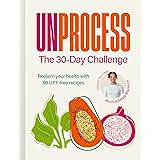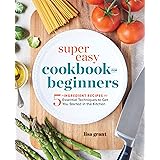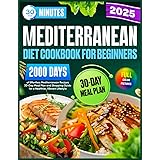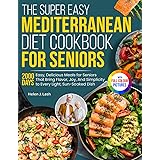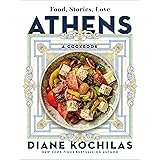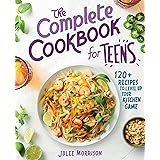As highlighted in the accompanying video, the journey toward robust cardiovascular health, especially for individuals over 60, is significantly influenced by dietary choices. Indeed, scientific evidence consistently demonstrates that a thoughtfully curated diet can play a pivotal role in maintaining clean arteries and significantly reducing the risk of debilitating events such as heart attack and stroke. This exploration delves deeper into the mechanisms by which specific everyday foods contribute to arterial wellness, providing an expert-level understanding for those committed to proactive health management.
The Pathogenesis of Atherosclerosis: A Senior Health Imperative
The aging process, coupled with an accumulation of suboptimal dietary and lifestyle factors, frequently culminates in a condition known as atherosclerosis. This pathological state is characterized by the progressive accumulation of fatty deposits, termed plaque, within the arterial walls. These plaques, composed primarily of cholesterol, cellular waste products, calcium, and fibrin, lead to a stiffening and narrowing of the arteries. Such vascular remodeling impedes the unrestricted flow of life-giving blood to vital organs and tissues.
The insidious nature of atherosclerosis lies in its typically asymptomatic progression over many years, often remaining undetected until a critical event manifests. For seniors, this can translate into a heightened predisposition to chronic conditions such as coronary artery disease, peripheral artery disease, and critically, a substantially increased risk of myocardial infarction (heart attack) or cerebrovascular accident (stroke). Thus, implementing strategies for optimal arterial health, particularly through nutrition, becomes an indispensable component of preventive medicine.
The Seven Pillars of Arterial Wellness: An In-Depth Examination
Integrating specific nutrient-dense foods into the daily regimen can profoundly impact the integrity and function of the vascular system. These dietary interventions are not merely supplementary; they represent a foundational strategy for **artery cleansing** and long-term **stroke prevention**. The following seven foods are substantiated by robust scientific research for their cardioprotective properties.
1. Garlic: The Cardioprotective Allium
Garlic (Allium sativum), a staple in global cuisines, possesses potent medicinal properties that have been recognized for millennia. Modern clinical investigations, such as those published in the *Nutrition Journal*, corroborate its efficacy in cardiovascular protection. Aged garlic extract, specifically, has been shown to mitigate plaque formation within arterial walls and enhance arterial elasticity, a crucial factor in maintaining optimal blood pressure and flow. The principal active compound, allicin, along with other organosulfur compounds, contributes to its therapeutic effects.
The mechanisms by which garlic supports **arterial health** are multifaceted. It has been observed to facilitate a reduction in total cholesterol and LDL (“bad”) cholesterol levels, thereby diminishing the raw material for plaque formation. Furthermore, garlic exhibits antihypertensive effects, contributing to lower systemic blood pressure. A key benefit for seniors involves its antiplatelet aggregation properties, which help to prevent the formation of dangerous blood clots that can precipitate strokes or heart attacks. A consistent daily intake of one to two cloves, whether raw or lightly cooked, is considered a clinically significant dosage for these cardioprotective effects.
2. Leafy Green Vegetables: Nitrates for Vascular Relaxation
Leafy green vegetables, encompassing varieties such as spinach, kale, and Swiss chard, are nutritional powerhouses particularly noted for their high nitrate content. Upon consumption, these dietary nitrates are converted by the body into nitric oxide (NO). Nitric oxide is a critical endogenous vasodilator, meaning it signals the smooth muscle cells surrounding blood vessels to relax, leading to increased vessel lumen diameter and improved blood flow. This physiological process is fundamental to maintaining healthy circulation and reducing arterial stiffness, a common consequence of aging.
A study elucidated in the *American Journal of Clinical Nutrition* revealed that individuals with regular consumption of nitrate-rich vegetables exhibited significantly lower blood pressure readings and superior **arterial health** parameters. For the senior population, where age-related arterial rigidity is prevalent, leafy greens act as a natural mechanism to restore vascular flexibility. Daily incorporation of a generous portion—perhaps a bowl of spinach salad or steamed kale—can be instrumental in enhancing endothelial function and overall vascular tone, contributing directly to **artery cleansing** efforts.
3. Fatty Fish: Omega-3s and Systemic Anti-Inflammation
Fatty fish species, including salmon, mackerel, and sardines, are an unparalleled source of long-chain omega-3 polyunsaturated fatty acids (PUFAs), specifically eicosapentaenoic acid (EPA) and docosahexaenoic acid (DHA). These essential fatty acids are renowned for their potent anti-inflammatory properties. Systemic inflammation is now recognized as a critical underlying driver of atherosclerotic plaque initiation and progression, destabilizing arterial walls and increasing the risk of plaque rupture.
Research published in the prestigious journal *Circulation* underscores the comprehensive cardiovascular benefits of omega-3s, which include a reduction in circulating triglyceride levels, a lowering of blood pressure, and inhibition of platelet aggregation, thereby reducing thrombotic risk. Notably, a consistent intake of fatty fish, ideally two to three servings per week, has been associated with a reduction in myocardial infarction risk by as much as 30% in senior cohorts. For individuals unable to consume fish, high-quality algae oil supplements provide a viable alternative for obtaining these vital omega-3s, directly supporting **stroke prevention** and overall heart function.
4. Berries: Antioxidant Powerhouses
Berries, such as blueberries, strawberries, and blackberries, are celebrated for their rich content of anthocyanins, a class of polyphenolic compounds responsible for their vibrant hues. These potent antioxidants are critical in combating oxidative stress, a biological process involving an imbalance between free radical production and the body’s ability to counteract their harmful effects. Oxidative stress is known to inflict damage upon arterial endothelial cells, initiating and perpetuating the formation of atherosclerotic plaques.
A study featured in the journal *Atherosclerosis* provided compelling evidence that regular berry consumption leads to improvements in blood vessel function and a measurable reduction in arterial stiffness. For seniors, the inclusion of a modest daily portion of berries not only contributes to the maintenance of clean arteries but also offers ancillary benefits for cognitive health, including enhanced memory function. The protective effect of anthocyanins on the vascular endothelium is a direct mechanism for **artery cleansing** at a cellular level.
5. Nuts: Healthy Fats for Lipid Management
A variety of nuts, with particular emphasis on almonds and walnuts, represent another cornerstone of a heart-healthy diet. They are abundant in monounsaturated and polyunsaturated fatty acids, dietary fiber, and vitamin E. This synergistic nutrient profile collectively contributes to a reduction in deleterious LDL cholesterol levels and a general improvement in **arterial health** parameters. Fiber, for instance, aids in the excretion of cholesterol, while healthy fats can positively modulate lipid profiles.
A landmark study published in the *Journal of the American College of Cardiology* demonstrated that individuals consuming a small handful of nuts at least five times weekly experienced a significantly lower risk of coronary artery disease. For seniors, this dietary practice translates into not only cleaner arteries but also a fortified defense against a spectrum of cardiac pathologies. A daily handful of unsalted nuts is a simple yet effective measure for safeguarding cardiovascular circulation and enhancing **stroke prevention** strategies.
6. Extra Virgin Olive Oil: Monounsaturated Fats and Polyphenols
Extra virgin olive oil (EVOO), often lauded as “liquid gold” for its extensive health benefits, is a cornerstone of the Mediterranean diet. Its rich composition of monounsaturated fatty acids (primarily oleic acid) and a diverse array of polyphenolic compounds, such as hydroxytyrosol and oleuropein, confers significant cardioprotective effects. These components collectively contribute to reduced systemic inflammation, lower LDL cholesterol, and improved endothelial function, which refers to the health and functionality of the inner lining of blood vessels.
The monumental PREDIMED trial, published in *The New England Journal of Medicine*, provided irrefutable evidence that seniors adhering to a Mediterranean dietary pattern, notably one rich in EVOO, exhibited up to a 30% lower incidence of major cardiovascular events, including heart attack and stroke. Incorporating one to two tablespoons of high-quality EVOO daily, perhaps drizzled over salads or cooked vegetables, is a remarkably effective strategy to maintain youthful and flexible arteries, underscoring its role in **artery cleansing** and **stroke prevention**.
7. Oats: Soluble Fiber for Cholesterol Excretion
Oats, a humble yet powerful whole grain, provide an excellent source of soluble fiber, specifically beta-glucan. This unique fiber forms a gel-like substance in the digestive tract, which effectively binds to dietary cholesterol and bile acids, preventing their reabsorption into the bloodstream and facilitating their excretion. This mechanism is crucial for the regulation of serum cholesterol levels.
Research, including studies highlighted in the *American Journal of Clinical Nutrition*, consistently shows that regular consumption of oats leads to a significant reduction in LDL cholesterol and overall improvement in **arterial health**. For seniors, a daily bowl of oatmeal not only aids in lipid management but also contributes to stable blood glucose levels, a factor critically important for preventing vascular damage associated with hyperglycemia. Oats are a simple, affordable, and highly effective food for long-term **artery cleansing**.
The Synergy of Dietary Intervention: Beyond Individual Foods
The profound impact of these seven foods on **arterial health** is not merely additive; it is synergistic. Each food contributes unique bioactive compounds and mechanisms of action, but when consumed collectively within a balanced diet, their effects are amplified. Garlic contributes to blood pressure and cholesterol modulation, while leafy greens enhance nitric oxide production for vascular relaxation. Omega-3s from fish quell inflammation, and berry anthocyanins neutralize oxidative stress. Nuts offer healthy fats for lipid profiles, olive oil improves endothelial function, and oats actively remove cholesterol from the circulatory system.
This integrated dietary approach creates a robust, multi-pronged defense system against the multifactorial pathogenesis of atherosclerosis. Seniors adopting such a diet typically experience superior cardiovascular outcomes compared to those relying solely on pharmacological interventions, demonstrating the immense power of nutritional science in **stroke prevention**.
Practical Integration and Evidence-Based Dosages for Seniors
Translating scientific knowledge into sustainable daily practices is paramount. The incorporation of these artery-cleansing foods can be achieved through simple and enjoyable modifications to meal routines. For breakfast, consider a warm bowl of oatmeal, topped with a handful of fresh berries and a sprinkle of chopped walnuts or almonds. This provides a potent blend of soluble fiber, antioxidants, and healthy fats. Using low-fat or plant-based milk, with cinnamon and natural fruit sweetness, can enhance palatability without adding detrimental sugars.
Lunch offers an ideal opportunity to integrate leafy greens. A substantial salad with spinach or kale as the base, dressed with extra virgin olive oil and lemon, and augmented with grilled salmon or sardines, provides multiple key elements for **arterial health**. For dinner, focus on lean proteins and ample vegetables. Grilled fatty fish paired with steamed or roasted vegetables, seasoned with garlic and olive oil, forms a highly cardioprotective meal. Crushing garlic cloves and allowing them to sit for a few minutes before cooking maximizes the activation of allicin, its key therapeutic compound.
Specific daily or weekly dosages, supported by clinical studies, are:
- **Garlic:** 1-2 cloves daily.
- **Leafy Greens:** 1-2 cups per day.
- **Fatty Fish:** 2-3 servings per week.
- **Berries:** Approximately half a cup daily.
- **Nuts:** A small handful (approx. 30g), 5 times per week.
- **Extra Virgin Olive Oil:** 1-2 tablespoons per day.
- **Oats:** At least 3 times per week.
These quantities are generally achievable and designed to fit seamlessly into a senior’s dietary pattern, providing a consistent supply of compounds vital for **artery cleansing**.
Navigating Dietary Changes: Considerations and Common Concerns
While natural dietary interventions are immensely powerful for **stroke prevention**, it is crucial for seniors to approach changes with awareness, particularly concerning potential interactions with existing medications. For example, foods like garlic and fish oil possess natural anticoagulant properties, which, while beneficial, necessitate consultation with a physician if one is concurrently prescribed blood thinners. Similarly, interactions with cholesterol-lowering drugs should be discussed with a healthcare provider.
A common concern is whether these foods can reverse advanced artery blockages. The scientific consensus indicates that while large, established plaques may not entirely dissolve, consistent dietary intervention can significantly slow their progression, stabilize existing plaques (reducing the risk of rupture), and in some cases, induce a modest regression of buildup over time. This mitigates the risk of acute cardiovascular events.
Cost is another frequent apprehension. However, many of these artery-cleansing foods—oats, garlic, and leafy greens—are highly affordable. Olive oil, nuts, and berries can be more economically procured in bulk or frozen. Canned fatty fish offers a cost-effective and convenient alternative. The emphasis should be on consistency rather than luxury. Taste preferences, often conditioned by years of consuming processed foods, can also be a hurdle. Yet, the natural flavors imparted by garlic, olive oil, and fresh herbs, combined with the natural sweetness of berries, can progressively re-educate taste buds, leading to a greater appreciation for whole, unprocessed foods. It has been observed that consistent dietary changes can lead to noticeable improvements in blood pressure and circulation within weeks, cholesterol levels within three months, and arterial flexibility within six months.
Beyond Diet: Lifestyle Pillars for Robust Circulation and Stroke Prevention
While the focus on the seven artery-cleansing foods is paramount, their benefits are profoundly amplified when integrated with supportive lifestyle habits. For seniors, where circulation problems are often exacerbated by reduced physical activity, incorporating even a modest daily walk of 20-30 minutes can dramatically improve blood flow. Physical activity enhances nitric oxide production, similar to leafy greens, fostering arterial relaxation and blood fluidity. Gentle exercises such as yoga or tai chi can also improve flexibility and circulation without undue cardiac strain.
Hydration, a frequently overlooked aspect, directly impacts blood viscosity. Adequate water intake (aiming for 6-8 glasses daily) ensures blood remains at an optimal viscosity, reducing the heart’s workload. Stress, a silent assailant, elevates blood pressure and releases inflammatory hormones detrimental to arterial walls. Techniques like deep breathing, meditation, or quiet time in nature can effectively mitigate stress and support cardiovascular health. Prioritizing 7-8 hours of restful sleep is also critical, as poor sleep increases inflammation and arterial stiffness, while quality rest facilitates bodily repair and restoration. Furthermore, abstaining from smoking—a primary driver of arterial damage—and limiting alcohol intake are non-negotiable for **arterial health**. Red wine, in modest quantities, does contain resveratrol, which has shown some heart-protective effects, but moderation is key. Maintaining a healthy body weight, often a natural consequence of adopting these dietary and lifestyle changes, reduces the burden of pro-inflammatory chemicals released by excess adiposity. Finally, regular health check-ups, monitoring blood pressure, cholesterol, and blood sugar, provide essential feedback, allowing for a personalized and evidence-based approach to long-term **stroke prevention** and **artery cleansing**.



